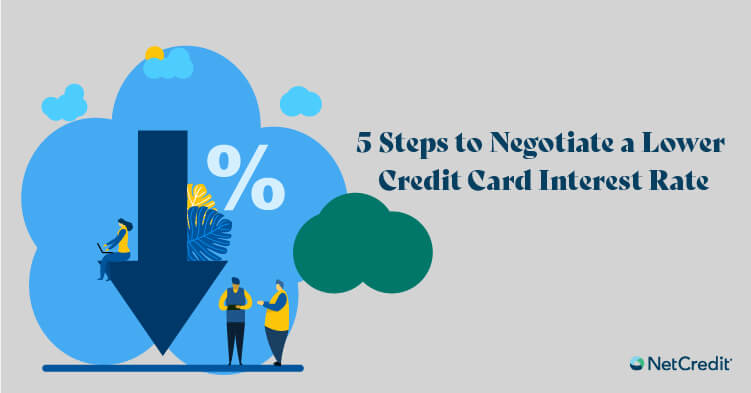Revolving credit is a type of credit that gives you access to funds that you can use as needed, instead of getting a lump sum like a traditional personal loan. As you repay what you’ve used, the funds become available to use again without reapplying. One of the most common types of revolving credit is a credit card, but another option is a personal line of credit.
So what’s the difference between a line of credit and a credit card? Does one let you borrow more than the other? Is one more convenient? Deciding between financial tools can feel overwhelming, especially when you’re not sure which is best for your situation.
Both options come with their own unique advantages and disadvantages. Below we’ll break down their differences and their pros and cons to help you decide which might work better for you.
Personal Line of Credit vs. Credit Card
Check out some of the key key differences between a credit card and personal line of credit.
| Credit Card | Personal Line of Credit | |
| Purpose | Convenient way to make everyday purchases. | Provides extra cash to cover unexpected costs and budget gaps. |
| Accessing Funds | Use your card to make cashless payments. | Receive direct deposit of cash into your bank account. |
| Interest Rates | Depends on credit card terms. Credit card cash advances typically carry high interest rates. | Depends on lender and borrower creditworthiness. |
| Fees | May come with fees such as annual fees, cash advance fees and late payment fees | May come with fees such as account maintenance fees, draw fees and late payment fees. |
| Perks | Some credit cards can come with rewards such as travel points or cash back rewards | Most lines of credit do not come with rewards programs. |
| Credit Limit | Typically has a lower credit limit. | May come with a higher credit limit. |
What is a personal line of credit and how does it work?
A personal line of credit is a type of funding that allows individuals to borrow money up to a specific limit. As they repay, the money becomes available to draw from again. Here’s how it typically works.
Borrow what you need. When you’re approved for a line of credit, you’ll get access to funds up to a certain credit limit, unlike an installment loan where you receive an upfront lump sum. In general, you can borrow from that limit and only pay interest on what you borrow. For example, if your credit limit is $10,000 and you borrow $1,000, you’ll only be charged interest on the $1,000. Keep in mind that some lenders may have a minimum draw requirement.
Understand the costs. Though you’re typically only charged interest on what you borrow, some lenders may charge fees such as draw fees or maintenance fees to keep your account open. Be sure to carefully review the loan terms and conditions before borrowing to help avoid any surprises.
Stay flexible. As you make your repayment, those funds become available again for future use. This can come in handy if you have unpredictable income, a large project you want to tackle or if you just want access to emergency funds. As long as your account stays open and you have available credit, you’ll have access to cash when you need it.
How does a credit card work?
A credit card works much like a personal line of credit. After you’re approved, you’ll be issued a credit limit and a card. You can use this card to make purchases that are charged against that limit. At the end of each billing period, you’ll be sent a bill. Once you’ve paid, those funds will once again become available to you.
A credit card is useful for everyday purchases like gas, groceries and bills. Many people find them more convenient than paying with cash or check (In the U.S., about 82% of adults had at least one credit card).
Like a personal line of credit, you’ll only be charged interest on the amount you borrow, and you’ll typically have a grace period to pay off your purchases without interest. Some providers even offer cards that earn you rewards as you use them.
There are a lot of credit card issuers, and they offer a wide range of cards tailored for all kinds of financial situations. Individuals with good credit will have more options available to them, generally with higher limits and lower annual percentage rates. You’ll need to evaluate what your credit profile looks like when deciding what kind of card is best for your situation.
Pros and cons of personal lines of credit
Pros of a personal line of credit
Potential for larger credit limits. A personal line of credit can give you access to higher credit limits than a credit card. This makes it easier to cover big expenses when you need to.
Lower interest rates. Lines of credit can have lower interest rates than credit card cash advances. This can help you save on interest during repayment. Keep in mind that the lender and your personal credit history will have an impact on your interest rate.
Flexible use. One of the key differences between a line of credit and a credit card is that a line of credit provides you with a deposit of cash into your checking account. You may not be able to use a credit card for certain expenses. While you can request a credit card cash advance to cover the cost, they may come with higher interest rates and other transaction fees.
Cons of a personal line of credit
Fees. Some lenders may charge different fees on a line of credit. This can include late or missed payment fees, maintenance fees, draw fees or others. Be mindful of fees as they can add up and impact the cost of borrowing. Always make sure to read the terms and conditions before taking on any type of credit.
No grace period. Unlike a credit card, a line of credit typically starts accruing interest as soon as you make a draw.
May get more with an installment loan. While a line of credit can offer potentially higher limits than a credit card, it may not be enough to cover some big expenses. You may be able to access a larger amount of money with a personal loan.
Pros and cons of credit cards
Pros of a credit card
Convenience. Swiping a card or entering your information online makes it easy to complete everyday purchases.
Grace period. Many credit cards have a grace period between the end of a billing cycle and when your payment is due. In this time, you can pay off the balance before any interest accrues. Keep in mind that if you request a cash advance, the interest may start accruing immediately and the interest rate may be higher.
Your account stays open indefinitely. A credit card account will typically stay open until you choose to close it. A line of credit, specifically a home equity line of credit, or HELOC, may have a set draw period and may close after a specific period of time.
Cons of a credit card
Higher or variable interest rates. Credit cards can have high and variable interest rates. Having an outstanding balance instead of paying your card off can add up quickly and increase the cost of borrowing.
Smaller limits. Credit cards often offer lower credit limits than personal loans or lines of credit. It may not be enough to cover larger expenses.
Costs of a cash advance. Credit card cash advances typically come with fees and a higher interest rate than charging something to your card. They also start accruing interest immediately, making it an expensive way to access cash.
Which should you choose?
Whether or not a credit card or line of credit is right will depend on your unique financial situation and how you need to use the funds. Here are things to consider when trying to decide:
What will it be used for? If you’re looking to make everyday purchases, a credit card can be a good choice. Many credit cards come with a grace period, which means you could avoid paying interest. On the other hand, a line of credit can offer flexibility for larger expenses like home improvement projects or unexpected emergencies.
Credit profile. A strong credit score can help you get more favorable terms for both lines of credit and credit cards. However, there are options available if you don’t have the best credit. If you have poor credit, a secured credit card can be a good option, but you’ll need to have some extra funds to use as collateral. With lines of credit, you may not need collateral to secure credit. Be sure to explore all your options and compare the rates and terms before signing any credit agreement.
Rewards and perks. If you want to earn rewards like cash back or travel points, you may want to look into credit cards. Most lines of credit don’t come with any type of rewards. However, you should be aware that most cards that come with these types of rewards require good credit to be approved.
FAQs about lines of credit and credit cards
Can I have both a credit card and a line of credit?
Yes, it’s possible to have a line of credit and a credit card. Because they each meet different needs, it can be useful to have both — you can use your credit card for everyday purchases while relying on a line of credit to help cover bigger expenses or to handle emergency situations.
Which is safer to use?
When used responsibly, both a credit card and a line of credit are safe. Credit cards often offer fraud protection which can make it safer for everyday purchases. However, a line of credit can offer security in situations where cash is needed or larger amounts of money are involved.
Having access to funds can make it tempting to overspend. According to a study, the total amount of credit card debt in the U.S. is over $1.1 trillion dollars. It can be easy to lose track of what you’re spending which can result in high balances and interest charges. Budgeting and monitoring your spending can help you safely use a line of credit or credit card.
Does a personal line of credit affect my credit score?
Whether or not a personal line of credit affects your credit score can often depend on whether or not your lender reports to the credit bureaus. If they do report to the credit bureaus, here are a few ways your score may be impacted.
Application. When you apply for a line of credit the lender may run a hard credit check. These types of checks can appear on your credit report and may lower your score temporarily.
Repayment. Your payment history has a big impact on your score. Missed or late payments can have a significant negative impact on your score. However, making your payments on-time and in full can help you build a positive credit history.
Credit utilization. The amounts you owe contribute to 30% of your FICO® score. Credit utilization is a measure of how much total available credit you have versus how much credit you’ve used. Most experts agree that you should aim to keep this below 30%.
Credit mix. Credit mix is another factor that can contribute to your score. This looks at the different types of credit you manage. Two of the main types are revolving and installment credit. Having a good mix can help give your score a boost.
Is a personal line of credit revolving credit?
Yes, a personal line of credit is a type of revolving credit. This means your funds become available to borrow again after you start repaying what you’ve borrowed.
DISCLAIMER: This content is for informational purposes only and should not be considered financial, investment, tax or legal advice.






